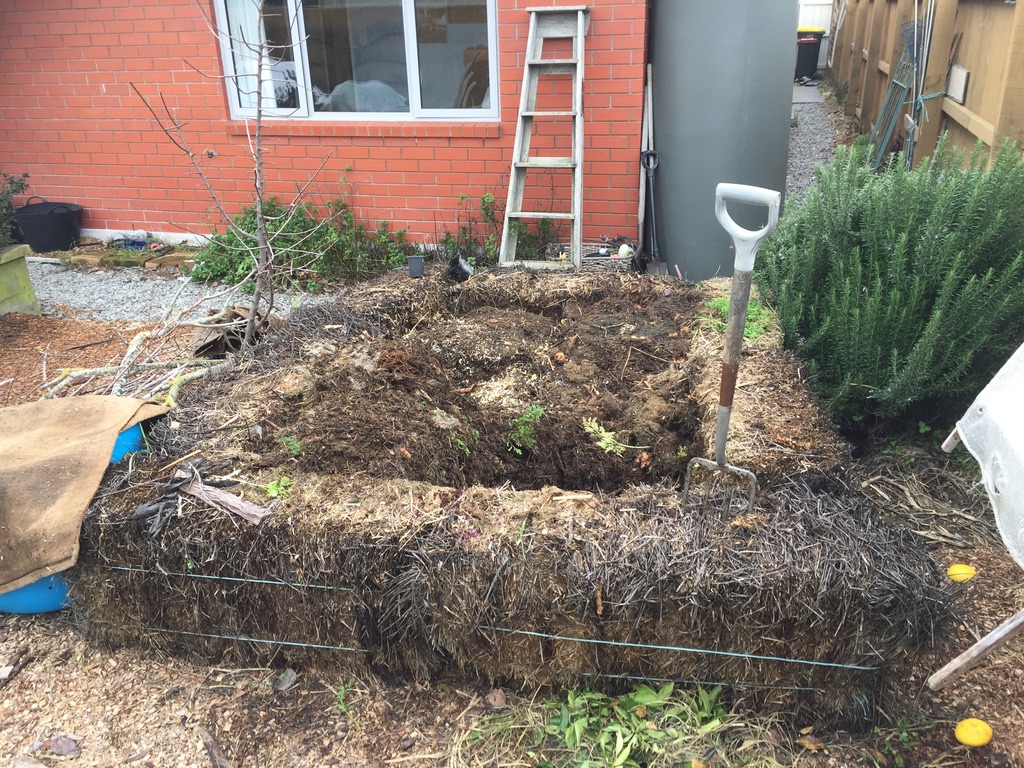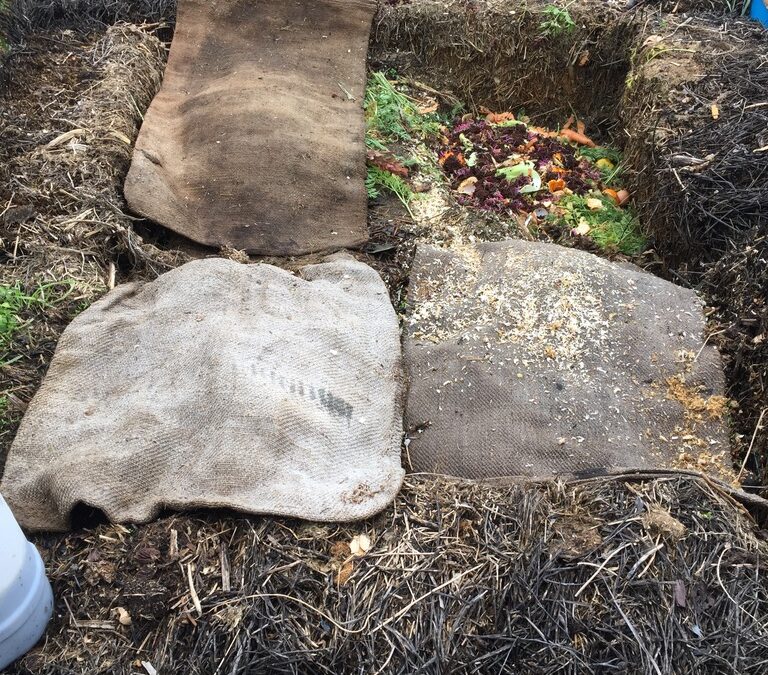We have admired different compost bin systems online and have also considered building a box style bin out of untreated wooden pallets, and although this seems like a logical idea – we’ve gone with a bin made of lucerne hay bales. Some might say that not a bin at all, but it works. It is winter in New Zealand at the moment, and our compost is very warm and steaming even on days with -5ºC frosts.
- There are 8 bales required, each bale stands approximately 60cm on its side
- As the bales rot down they add to the end result, however, they retain their shape for at least a season or two
- The sacks over top reduce pests and increase heat being trapped in
- We add our garden scarps such as non-seed head weeds, excess harvest waste, etc
- We add our kitchen scraps – excluding meat and dairy products (although some diluted milk can be useful for increasing some microorganisms in other parts of the garden)
- We add in our lawn clippings, but we create a pile of these and sprinkle/dust in the lawn clippings between other layers
- We place a sack on top at the end of each delivery and allow worms and good bugs to do their thing
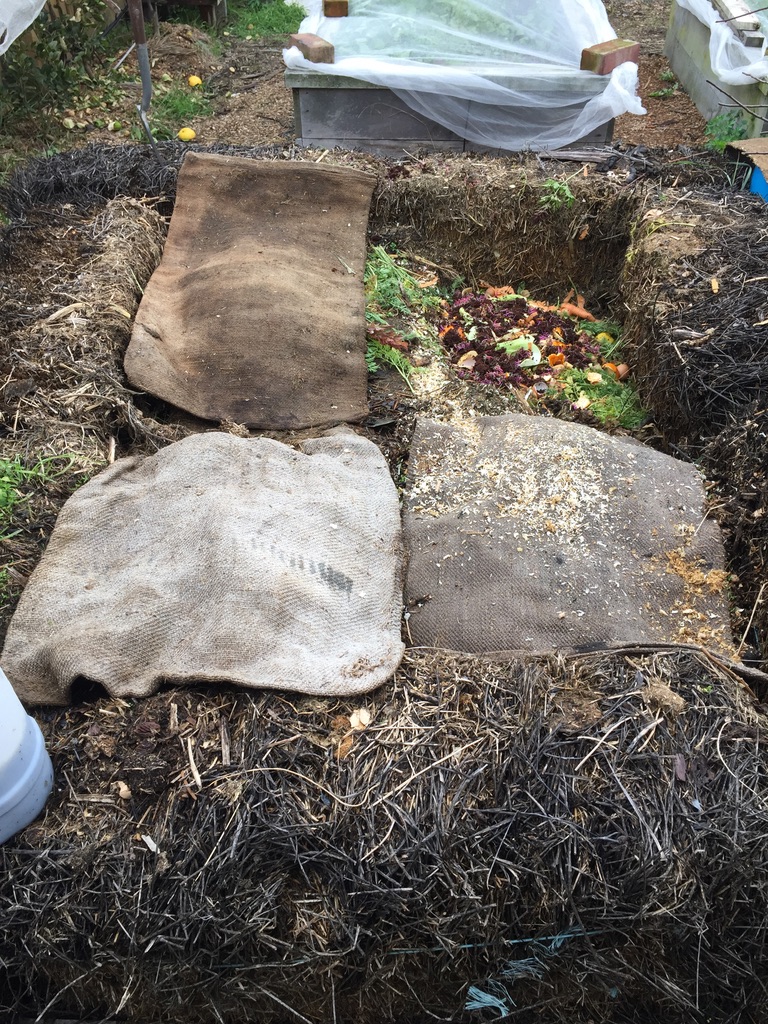
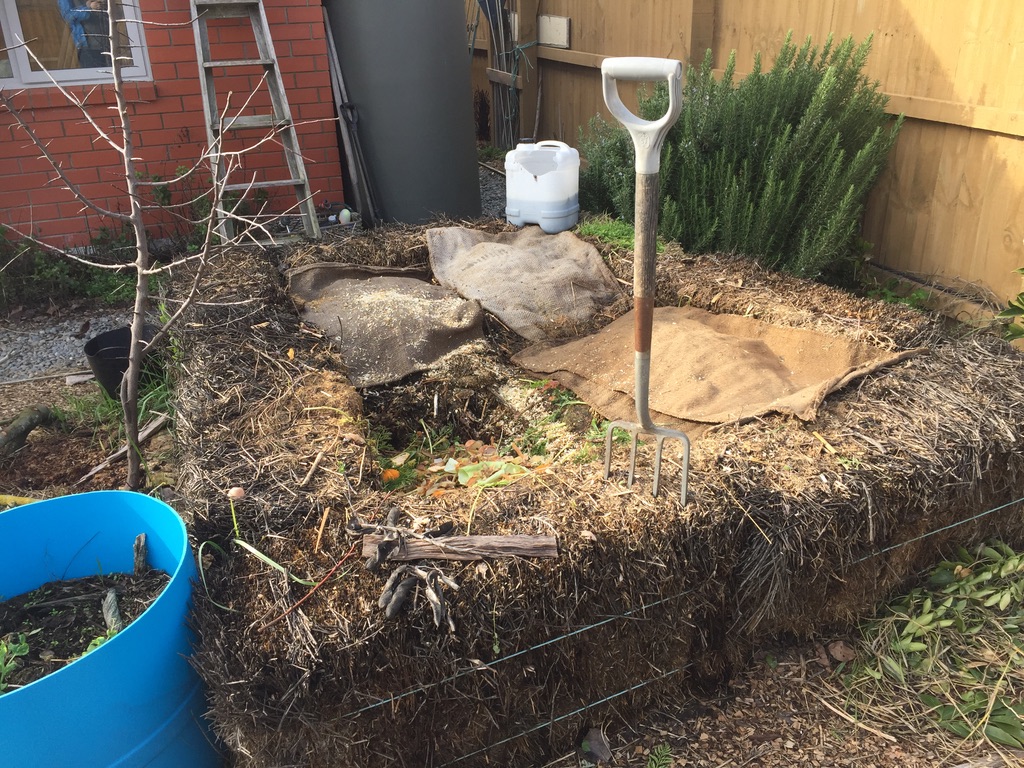
Adding to the compost on a regular basis means that there is a lot of greens and not as much brown at this time of year. The solution to this is that we turn one sacked area on to another, and this stirs up the worms and adds air into the pile.
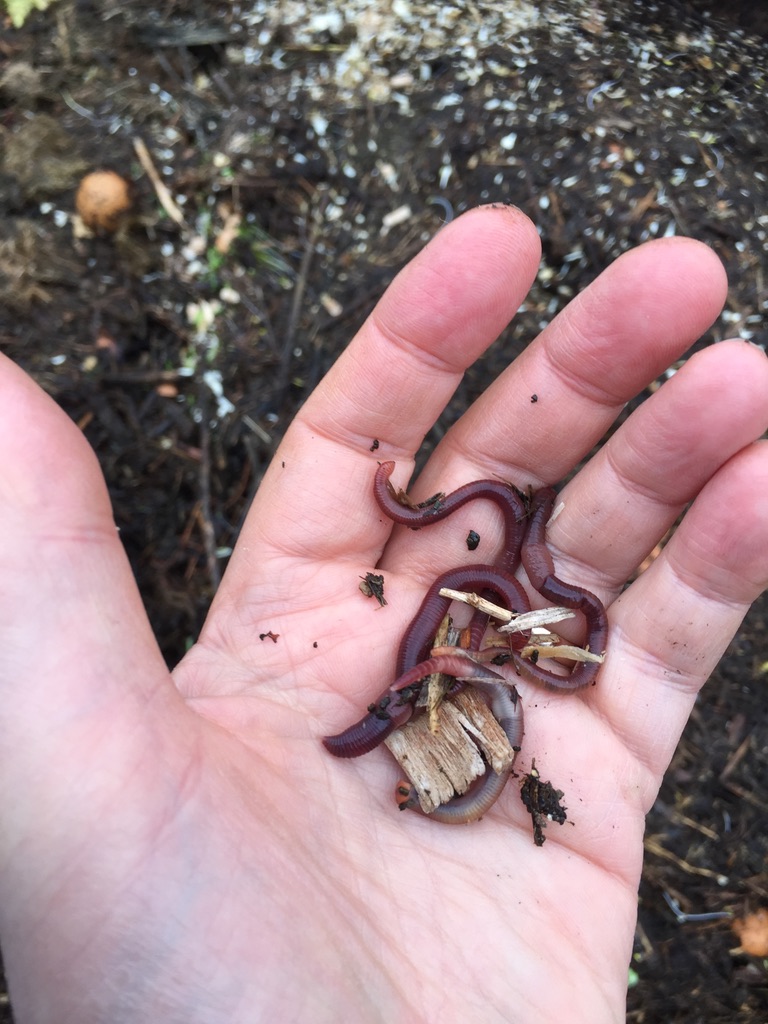
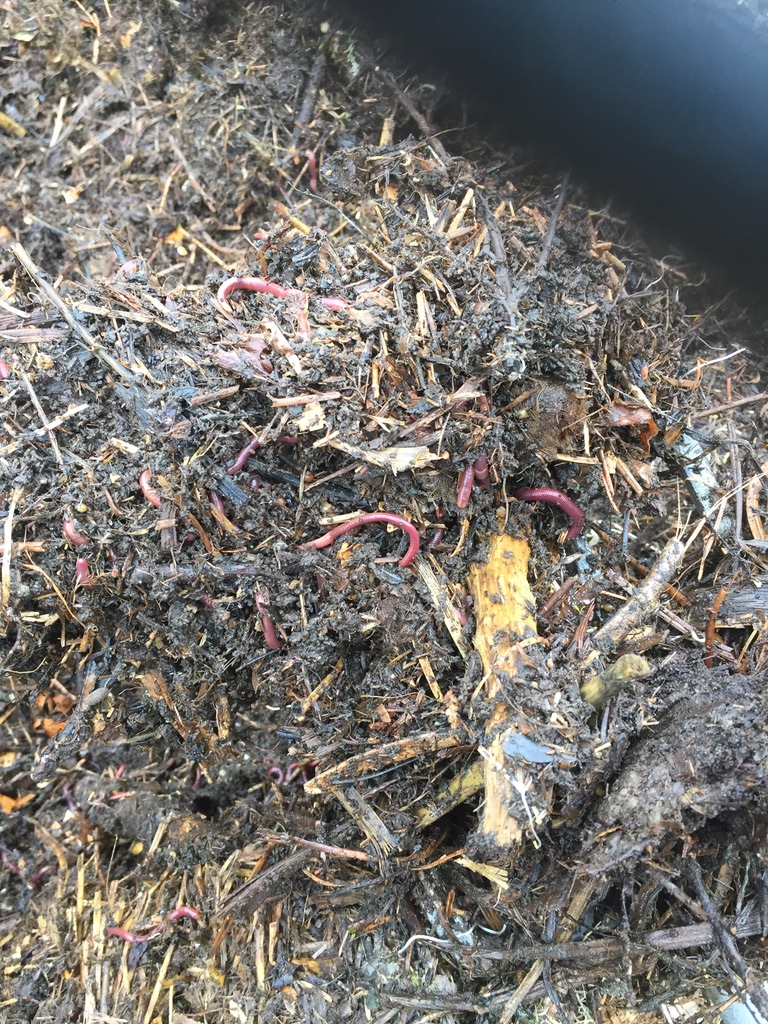
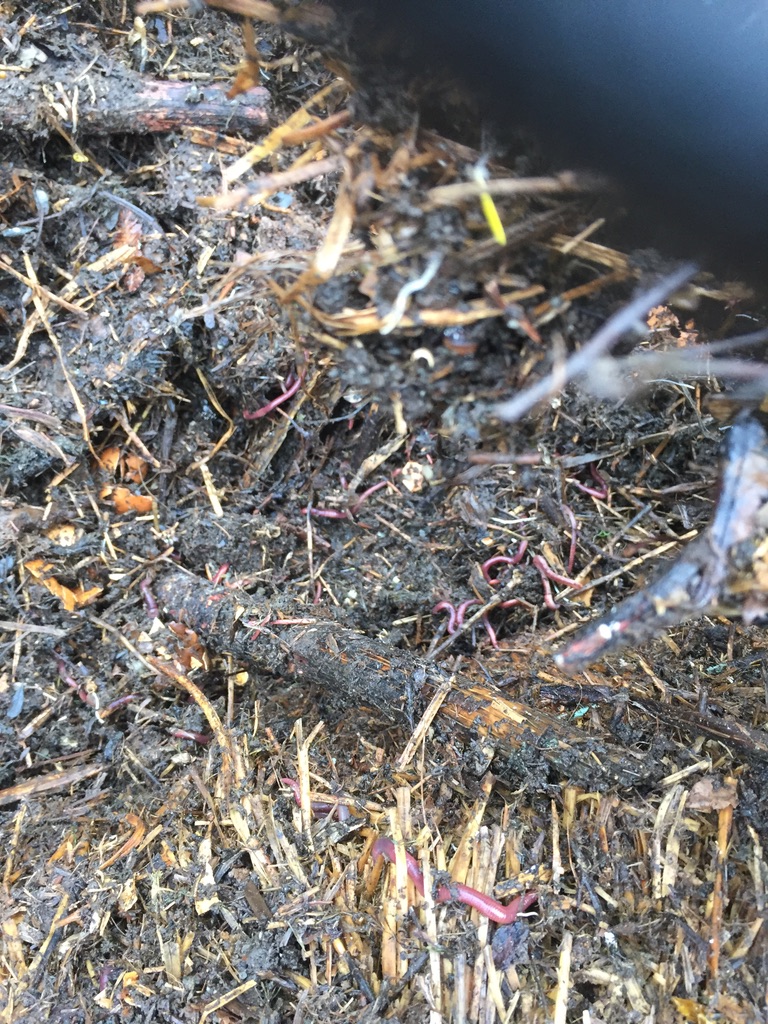
Discovering a good quantity of worms and black beetles is always a healthy sign.
- We also add in comfrey tea as a diluted liquid to help boost the breaking down and nutrient richness.
- We find that after the pile has been turned that the heat increases again within 6 hours.
